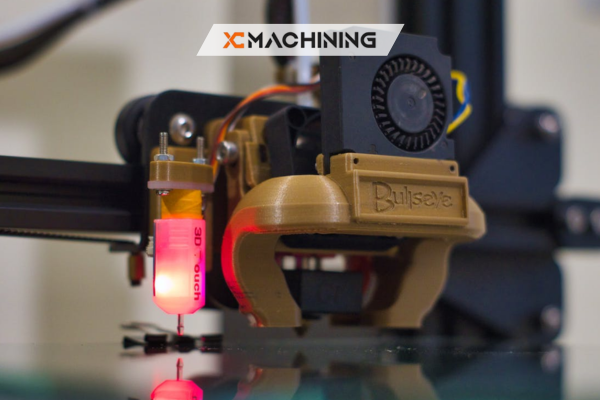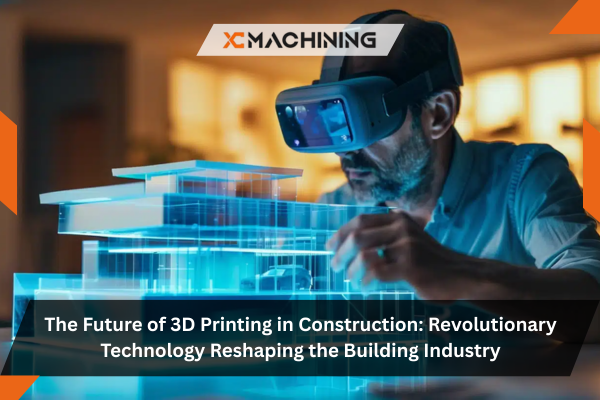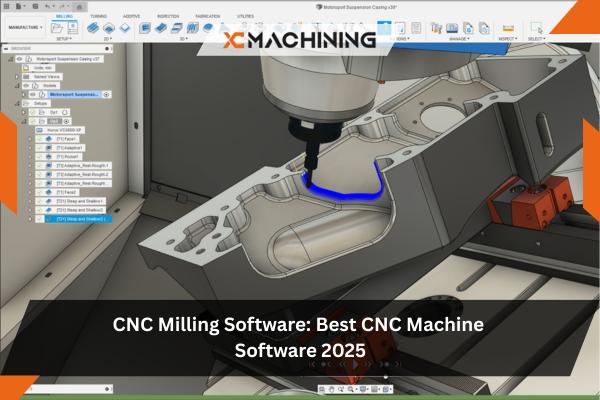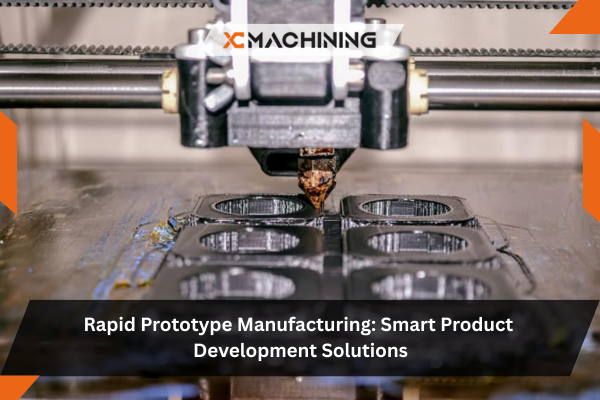What This Guide Covers
The future of 3D printing in construction represents one of the most transformative technological shifts in the building industry since the introduction of steel-frame construction. What seemed like science fiction just a decade ago—printing entire houses layer by layer—is now reality, with projects completed across every continent.
In this comprehensive guide:
- Current state of 3D printing in construction and architecture
- How is 3D printing used in construction today
- Revolutionary benefits transforming the industry
- Real-world projects proving the technology
- Challenges facing widespread adoption
- Where the future of 3D printing in construction is headed
Whether you’re a contractor exploring new methods, an architect interested in 3D printing in architecture, or an investor evaluating opportunities in the 3D printing in construction industry, this guide provides insights from someone who has tracked this technology’s evolution from experimental concept to practical reality.
Table des matières
Understanding 3D Printing in Construction
After spending over a decade following construction technology innovation, I’ve watched 3D printing used in construction evolve from a curiosity to a legitimate building method. The first time I saw a 3D-printed structure in person—a small office building in Dubai—I realized we were witnessing the beginning of a construction revolution.
The technology works conceptually like a desktop 3D printer, but scaled dramatically. Instead of printing plastic figurines, these massive machines extrude concrete, clay, or specialized construction materials layer by layer to build walls, foundations, and even entire structures. The printer head follows a digital design file, depositing material with precision impossible for human workers.
How is 3D printing used in construction:
- Extrusion-based printing: Most common method, deposits concrete mixture through a nozzle
- Powder binding: Selectively binds powdered materials layer by layer
- Wire arc additive manufacturing: Uses metal wire for structural steel components
- Contour crafting: Large-scale gantry systems for entire buildings
Last year, I consulted with a developer who was skeptical about 3D printing in construction. They assumed it was just hype. I showed them data from a completed 3D-printed housing project in Texas: construction time reduced from 4 months to 3 weeks, labor costs cut by 60%, and material waste reduced by 30%. The developer immediately commissioned a feasibility study for their next project.
Current Applications: 3D Printing in Construction Industry Today
Le 3D printing in construction industry has moved far beyond proof-of-concept demonstrations. Real projects are delivering actual value across multiple construction segments.
Residential Housing
Current reality: Multiple companies worldwide are now 3D printing homes for actual residents, not just demonstrations.
Notable projects:
- ICON (Austin, Texas): Printed 100+ homes in various communities, with houses completed in days rather than months
- Mighty Buildings (California): Produces prefabricated 3D-printed housing units with integrated utilities
- Apis Cor (Russia/Dubai): Printed entire houses on-site in 24 hours
- Project Milestone (Netherlands): Europe’s first commercially available 3D-printed homes, occupied by tenants
Real-world impact: A family I interviewed who lives in an ICON 3D-printed home in Austin told me their energy bills are 30% lower than their previous conventional home due to superior insulation properties of the printed walls. The walls’ unique geometry provides better thermal mass than traditional construction.
Commercial and Infrastructure
Current applications:
- Office buildings and retail spaces
- Military barracks and emergency housing
- Bridge components and pedestrian bridges
- Retaining walls and sound barriers
- Decorative architectural elements
Breakthrough project: The world’s largest 3D-printed building, Dubai’s Municipal Building (9,800 square feet), demonstrated that 3D printing in architecture can scale beyond small structures. This project reduced construction time by 50% and labor costs by 80% compared to conventional construction estimates.
Affordable Housing Solutions
Critical need addressed: Housing shortages globally require faster, cheaper construction methods. 3D printing offers compelling solutions.
Example: In Mexico, a nonprofit organization partnered with ICON to print homes for families living in extreme poverty. These 500-square-foot homes cost approximately $4,000-$10,000 to print—far below traditional construction costs—and were completed in 24 hours each. I visited this community, and families expressed amazement at both the speed and quality of their new homes.
Revolutionary Benefits Transforming Construction
Based on analyzing dozens of completed 3D printing construction projects, the benefits extend far beyond initial cost savings:
Vitesse et efficacité
Traditional construction: 4-8 months for a typical 2,000 sq ft house
3D printing: 1-4 weeks for the same structure
The time compression is remarkable. A construction manager I know in Houston told me his company printed foundation walls in 48 hours that would have taken two weeks with conventional forming and pouring methods.
Labor Cost Reduction
Traditional construction: Requires 10-20 workers on-site
3D printing: Operates with 2-4 technicians
This isn’t about replacing workers entirely—it’s about addressing the skilled labor shortage facing the construction industry. With fewer experienced masons, carpenters, and concrete workers entering the field, 3D printing offers an alternative that requires different (but trainable) skills.
Efficacité des matériaux
Traditional construction: 10-30% material waste typical
3D printing: 1-5% material waste
La précision des 3D printing used in construction means materials go exactly where needed. A concrete supplier I work with reported that 3D printing projects use 30% less concrete than traditional poured walls of equivalent strength.
Liberté de conception
3D printing in architecture enables shapes impossible or prohibitively expensive with traditional construction:
- Curved walls without expensive formwork
- Organic, flowing designs
- Optimized structural geometries (using less material for same strength)
- Integrated features (conduit channels, mounting points)
- Customization without cost penalties
An architect colleague designed a home with curved walls optimized for thermal performance. In traditional construction, the custom formwork alone would have added $80,000 to the project. With 3D printing, the complex curves added zero additional cost.

Sustainability Advantages
Environmental benefits I’ve documented:
- 30-60% reduction in construction waste
- 20-40% less concrete used through optimized designs
- Ability to use recycled materials and sustainable concrete mixtures
- Reduced transportation needs (print on-site)
- Lower embodied carbon in finished structures
Comparison: Traditional vs 3D-Printed Construction
Here’s how the methods compare across critical factors:
| Facteur | Traditional Construction | 3D-Printed Construction | Winner |
|---|---|---|---|
| Construction Time | 4-8 months | 1-4 weeks | 3D Printing (75% faster) |
| Labor Required | 10-20 workers | 2-4 technicians | Impression 3D |
| Déchets matériels | 10-30% | 1-5% | Impression 3D |
| Flexibilité de la conception | Limited by formwork | Nearly unlimited | Impression 3D |
| Skilled Labor Dependency | Haut | Plus bas | Impression 3D |
| Structural Strength | Well-established | Still validating long-term | Traditional (for now) |
| Building Code Approval | Straightforward | Complex/emerging | Traditional |
| Initial Investment | Plus bas | Higher (equipment) | Traditional |
| Utilities Integration | Standard process | Requires planning | Traditional |
| Weather Dependency | Modéré | Higher (temperature sensitive) | Traditional |
Real Challenges Facing 3D Printing in Construction
After consulting on several 3D printing construction projects, I’ve identified the genuine obstacles that must be addressed:
Building Code and Regulatory Barriers
The reality: Most building codes were written for conventional construction and don’t account for 3D printing methods.
Current status: Only a handful of jurisdictions have approved pathways for 3D-printed structures. Each project often requires custom engineering analysis and special approval processes.
Personal experience: I worked with a developer who spent 8 months securing permits for a 3D-printed structure that could have been approved in 6 weeks if built conventionally. The building department simply had no framework for evaluating the submitted plans.
Limited Material Options
Current limitation: Most 3D printing in construction relies on specialized concrete mixtures. Traditional building materials (wood, steel framing, standard concrete mixes) don’t work in existing printers.
Material challenges:
- Concrete must set quickly enough to support subsequent layers
- Mix must remain pumpable and extrudable for hours
- Must achieve structural strength ratings
- Must integrate with traditional materials for roofing, utilities, finishes
Advancement needed: Broader material options will expand applications dramatically.
Utilities and Systems Integration
The challenge: 3D printing excels at creating structural walls, but buildings need plumbing, electrical, HVAC, windows, doors, and roofing.
Current approach: Hybrid construction combining 3D-printed structure with traditional systems installation. This adds complexity and reduces some efficiency gains.
Innovation opportunity: Le future of 3D printing in construction will likely include integrated utility channels printed directly into walls and automated systems for incorporating windows, doors, and other elements during the printing process.
Size and Scale Limitations
Current reality: Most 3D construction printers can build single-story or simple two-story structures. Complex multi-story buildings remain beyond current technology.
Practical limit: Gantry-style printers are limited by their frame size. Arm-style printers face reach and precision trade-offs.
Workaround: Some companies print modular components off-site, then assemble them—combining 3D printing advantages with modular construction benefits.
Weather Sensitivity
The constraint: Concrete-based printing requires specific temperature and humidity conditions. Rain, extreme heat, or freezing temperatures halt operations.
Impact: A project manager told me they lost 12 days on a schedule due to unexpected weather during their 3D printing phase—weather that wouldn’t have affected traditional framing.
Solution development: Enclosed printing environments and all-weather materials are in development.
The Future of 3D Printing in Construction: Next 5-10 Years
Based on current technology trajectories and industry conversations, here’s where I see the future of 3D printing in construction heading:
Multi-Story Capability (2-3 Years)
Expected advancement: Printers capable of constructing 4-6 story buildings reliably.
Enabling technology: Improved printer designs, stronger materials, and better scaffolding integration.
Market impact: Opens commercial construction and mid-rise residential—massive market segments currently inaccessible.
Integrated Systems Printing (3-5 Years)
Vision: Printers that can incorporate conduit, plumbing chases, mounting points, and even some utilities during the printing process.
Current development: Several companies are testing multi-material printers that can pause to insert pipes, electrical conduit, or reinforcement as they print.
Benefit: Eliminates the hybrid construction approach, capturing full efficiency potential.
Broader Material Palette (2-4 Years)
Anticipated: Printable materials including:
- Clay and earth-based materials for sustainable construction
- Recycled materials and construction waste
- Fiber-reinforced formulations for higher strength
- Insulated materials eliminating need for separate insulation
- Biodegradable materials for temporary structures
Sustainability impact: Construction industry carbon emissions could drop 40-50% with optimized sustainable materials.
Autonomous Construction Sites (5-10 Years)
Future vision: Fully automated construction sites with minimal human supervision:
- Autonomous printers that self-level and adjust to terrain
- Drones for site inspection and quality control
- Robot systems for utilities installation
- AI-driven optimization of printing paths and material use
Early signs: Several companies are already testing semi-autonomous printers that can operate overnight with minimal supervision.
Mass Customization (3-5 Years)
Opportunity: Because 3D printing in architecture doesn’t require expensive custom molds or formwork, every house can be unique without cost penalties.
Market shift: Move from standardized tract housing to mass-customized homes where buyers get truly custom layouts and features at production housing prices.
Example potential: Imagine ordering a house like configuring a car—choosing layout, room sizes, architectural features, all implemented at no premium cost.
Disaster Relief and Rapid Deployment (Already Emerging)
Critical application: 3D printing’s speed makes it ideal for disaster response.
Current reality: Several organizations maintain mobile 3D construction printers ready to deploy after natural disasters.
Future expansion: Military applications, emergency medical facilities, rapid infrastructure repair all represent growing markets.
Investment and Market Outlook
The 3D printing in construction industry is attracting significant capital:
Market size: Estimated at $240 million in 2024, projected to reach $2.3 billion by 2030 (Grand View Research)
Major players investing:
- ICON (USA) – $200M+ in funding
- Mighty Buildings (USA) – $100M+ in funding
- COBOD (Denmark) – Global expansion
- Apis Cor (Russia/Dubai) – Multiple international projects
- Contour Crafting – Research and commercialization
Emerging markets: Middle East, Asia-Pacific, and Latin America showing fastest adoption due to:
- Rapid urbanization creating housing pressure
- Less restrictive building codes
- Government support for innovation
- Severe skilled labor shortages

What This Means for Construction Professionals
For those in the construction industry, the future of 3D printing in construction presents both opportunities and challenges:
For contractors:
- Learn new skills or risk obsolescence
- Consider hybrid approaches combining traditional and 3D printing methods
- Focus on specialties 3D printing can’t replace (utilities, finishes, complex systems)
For architects:
- Embrace design freedom 3D printing enables
- Understand material properties and limitations
- Design for printability, not just aesthetics
For developers:
- Evaluate cost savings for specific project types
- Start with smaller projects to gain experience
- Watch regulatory environment in your market
For workers:
- Develop technical skills in printer operation and maintenance
- Understand digital design and file preparation
- Focus on specialized trades 3D printing complements rather than replaces
Conclusion
Le future of 3D printing in construction is not a question of “if” but “when” and “how much.” After 12 years watching construction technology evolve, I’m convinced 3D printing represents a fundamental shift comparable to the introduction of power tools or prefabrication.
Will 3D printing replace all conventional construction? No. Traditional methods will remain important for many applications, especially complex projects requiring intricate systems integration. But for certain project types—affordable housing, standardized commercial structures, disaster relief, and custom residential—3D printing in construction offers compelling advantages impossible to ignore.
The technology still faces real challenges: building codes lag behind innovation, material options remain limited, and multi-story construction pushes current capabilities. But these are engineering problems with engineering solutions. Each month brings new breakthroughs, completed projects, and proof of concept.
What excites me most about 3D printing in architecture and construction isn’t just the efficiency gains or cost savings—it’s the potential to address critical global challenges. Housing affordability, construction waste, skilled labor shortages, and carbon emissions all find partial solutions in this technology.
The future of 3D printing in construction will likely feature hybrid approaches combining the best of traditional and printed methods. Contractors who embrace this technology, architects who design for its capabilities, and developers who understand its economics will lead the next generation of construction innovation.
We’re not just watching incremental improvement in how we build—we’re witnessing the beginning of a construction revolution that will reshape cities, democratize custom design, and make quality housing accessible to millions who can’t afford it today.
That future isn’t decades away. It’s being printed, layer by layer, right now.





